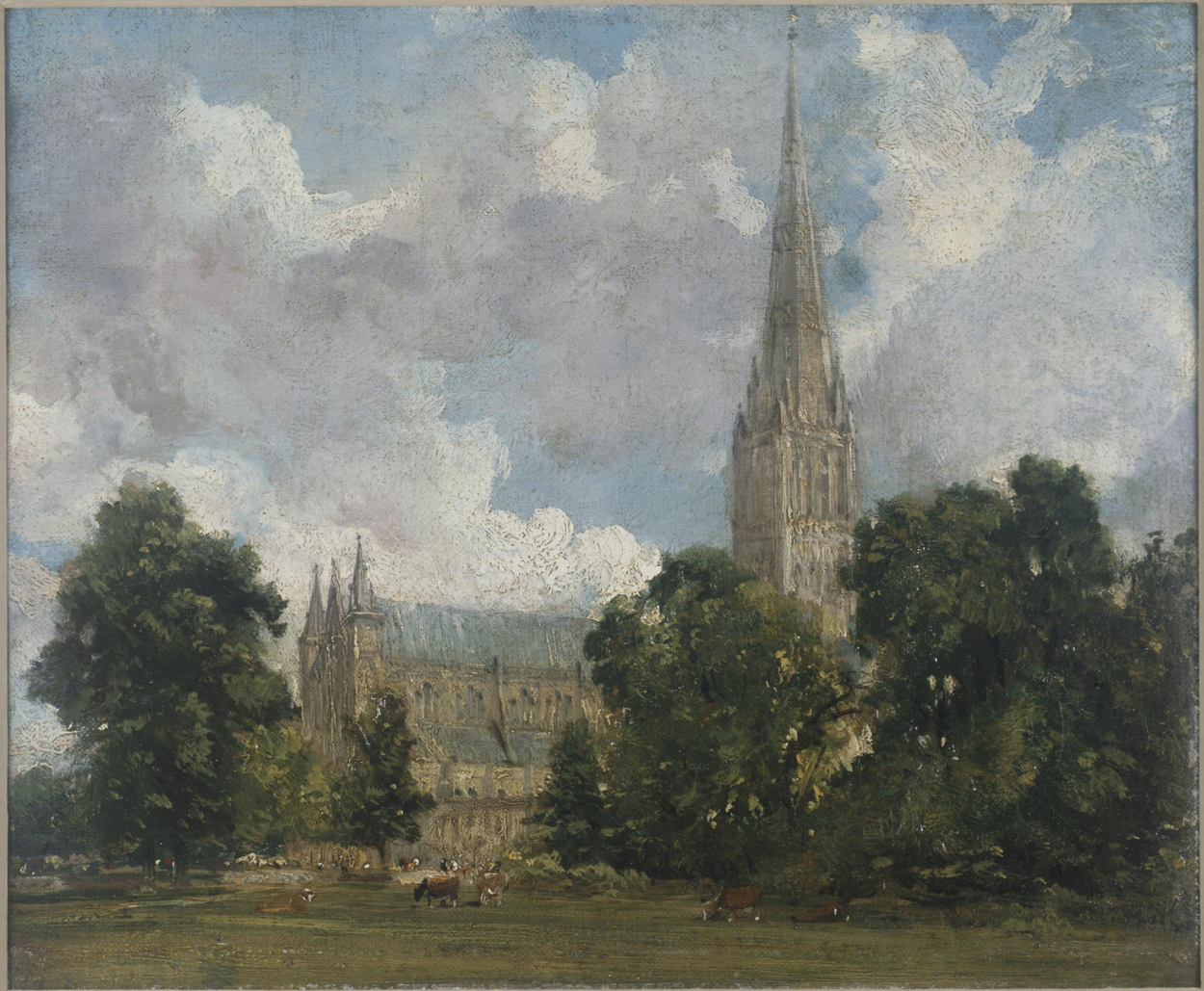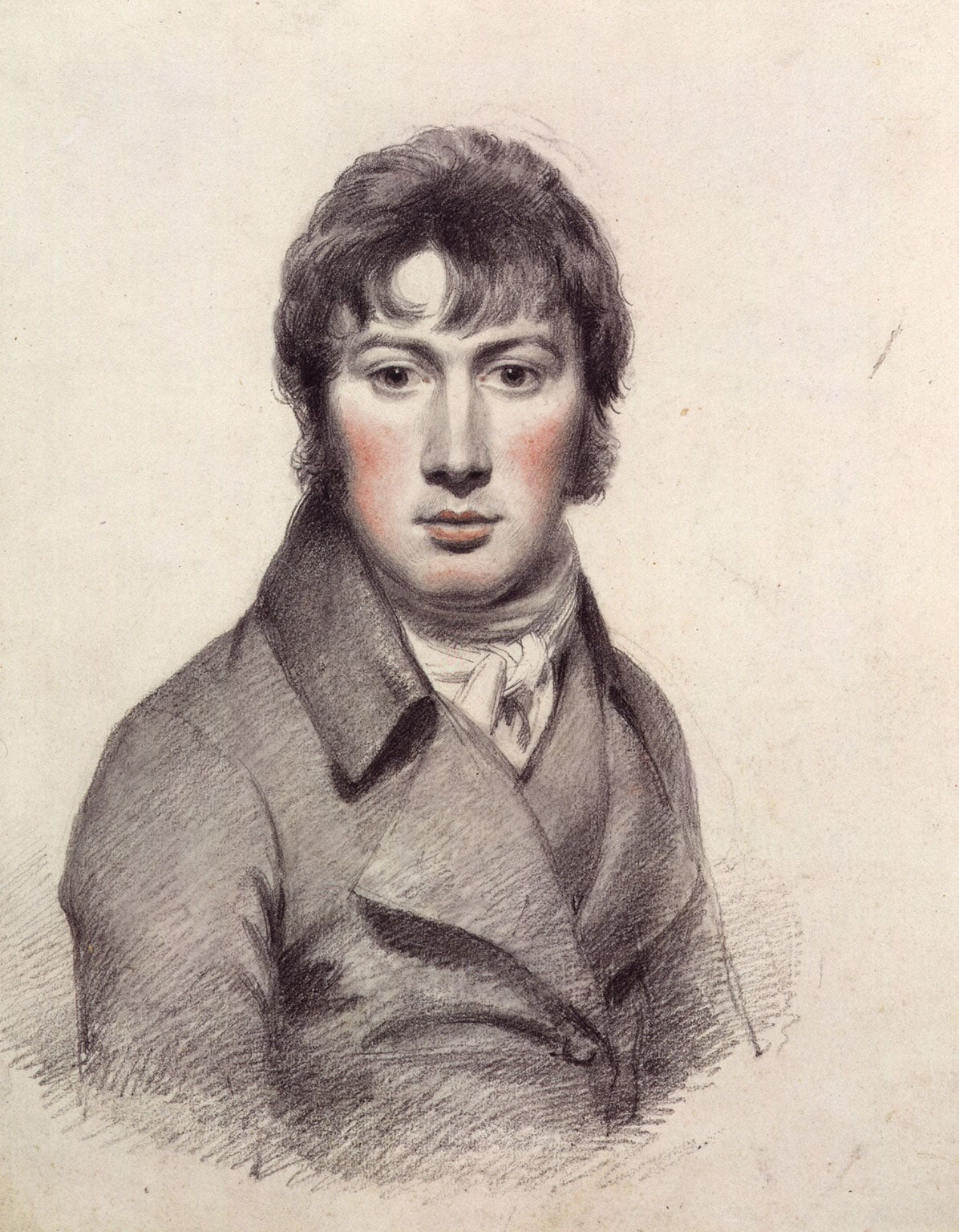John Constable (1776–1837), despite showing little talent early on, attended the Royal Academy in London where he developed a broad manner of landscape painting influenced by classicists Claude and Poussin, and by Flemish and Dutch painters Rubens and Ruysdael.
His early work was also influenced by the English artist Turner; Constable developed a distaste for the dramatic, romantically tempestuous interpretations of landscapes by Turner, however, finding them to be too brooding. The scenes that Turner painted, in particular those of the Lake District in the north of England, were uninhabited, which Constable found alien and discomfiting. He took far more solace in painting the places where people actually lived, and where their lives created homeiness. The romanticized landscape was certainly more fashionable at the time, but Constable instead sought to focus on the serenity to be found closer to home, in ordinary daily life, and where people lived harmoniously with nature.
Constable was adamant that nature itself should inspire the composition of a painting, paying particular attention to the ever-changing touch of light on the landscape, the effects of the passage of time through the seasons, and the way in which the natural world is in a constant state of flux, declaiming that “no two days are alike, nor even two hours; neither were there ever two leaves of a tree alike since the creation of all the world.” Constable’s brushwork reflects his attitude towards his environment: it is loose and brisk, evoking a sense that nature is a freely changing entity that cannot necessarily be captured in one definable moment. An impression of the same scene a week later would, in Constable’s eyes, look almost entirely different.
Constable visited Salisbury first in 1811 to stay with his close friend John Fisher, then the Bishop of Salisbury. It seems clear from the painting that Constable loved this area of England. The cathedral is set in a lovingly rendered pastoral scene, cows grazing languidly in the summer sun, the trees lush and green. The cathedral itself, despite its monumental status as a piece of architecture, is inviting, even friendly, as Constable would have found it. The painting is replete with notions of comfort and familiarity of the kind that we feel when we are glad to have returned home after a long absence.
- Sarah Mills
P.S. Another famous artist who got enchanted by a cathedral was Claude Monet. He created several paintings depicting the Rouen Cathedral which you can see here.


 John Constable
John Constable